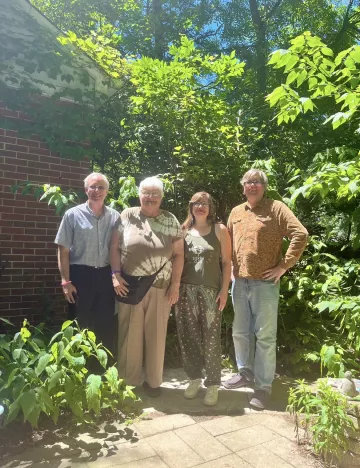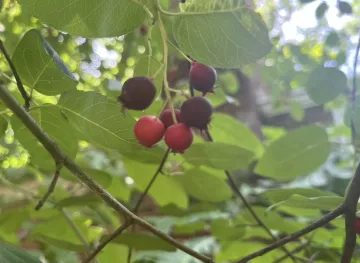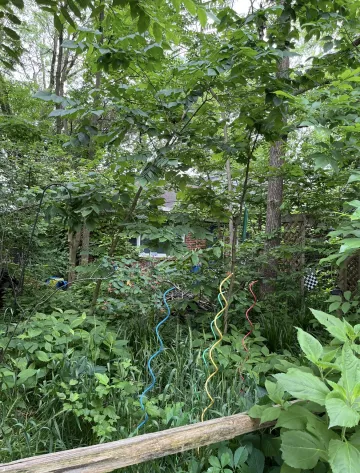
I’ve lived at Wildergarden since 1990. Folks from the Sierra Club Hoosier Chapter recently visited. They invited me to write this article.
Briefly, I’m a native of Bloomington, Indiana. From ages 10-12 I gardened at Hilltop Garden and Nature Center. In our neighborhood we had bushes and low-branched trees as hideouts and clubhouses.
After graduating from Indiana University School of Law-Bloomington, I watched a Farm Aid concert. It hit me; I need to use my law degree to help farmers facing foreclosure.
To save money, farmers looked to more natural methods. By visiting sustainable and organic farms, I was even more inspired to transform my own yard. Tilling large garden plots, and removing turfgrass, was a gutsy initial step. At first I grew vegetables and fruits. As I immediately saw an influx of wild plants and insects, I instinctively yielded to nature, wanting my yard to have a “rural” feel. I have witnessed the process of biological succession ever since.
Today, soil, plants, and habitat remain my passion in life. The Sierra Club mission rings true for me, because at Wildergarden we have re-wilded our turfgrass lawn into an urban oasis. I live among a plant community of native Indiana trees, shrubs, vines, grasses, fungi, sedges, moss, and lichens.

We are now an urban mini-forest. At .13 acre, we are a forest fragment. One benefit of our size is that we have the edge effect working for us. This is because we are at the intersection of two different ecosystems. In this case it is biodiverse forest next to streets and turfgrass yards. This edge actually stimulates biodiversity. For example, the edge allows more sunlight into the forest and forest conditions are immediately accessible to outsider organisms.
We created Wildergarden primarily through passive restoration, rather than decisive management. This was quite an unexpected discovery about how nature heals itself after disturbance. One obvious feature is that the majority (67 percent) of our trees are volunteers. A volunteer is a plant that was not intentionally planted by humans. It is planted through the actions of birds, small mammals, insects, and the wind.

Some of my neighbors and county officials were alarmed by this. For a few years we fought to give pro-ecological clarity to vague nuisance ordinances. This fear of nature remains an obstacle that urban nature stewards must surmount. In humility, and with dedicated communication, we resolved these issues and continued the restoration journey. We are an example for people wanting nature around their home. As people choose to live in cities, we bring beloved wildness with us.
Recently, we’ve added paths to accommodate visitors. In 2022, we formed a 501c3 nonprofit for charitable education. Our mission: to empower homeowners to provide more ecologically sound land in their yards.
Through Wildergarden, I have gained insight into the fact that nature is a personal experience of choice. We are a place to live, garden, and provide habitat. We enjoy sharing Wildergarden with other people.
The best way to learn and get involved is to visit Wildergarden. In many ways, the garden speaks for itself. Part of our job is to document the benefits it provides and explain them to the wider community. We hope to inspire others to take steps to create their own nature sanctuary.
In closing, text me at 317-374-6163 to arrange a personal tour of Wildergarden.
Julia Wilder, president and founder of Wildergarden.